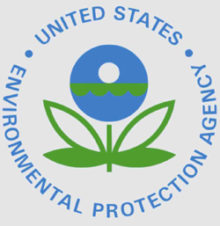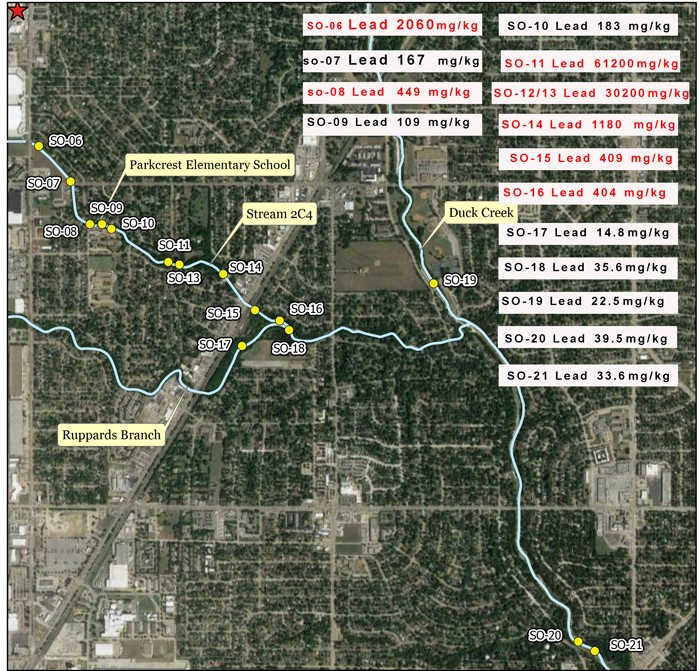For 25 years, there have been residents of Meadowlark, Williams and English estates who suspected possible contamination caused by battery manufacturer Globe Union at 1111 South Shiloh, as well as other manufacturing organizations in the area. Some of the residents’ suspicions have been confirmed through EPA testing. Globe Union, Inc. was a manufacturer of lead oxide batteries from the 1950s through 1995.
Background
In 1994, Holli Sanborn and Rhonda Mullin began investigating what they felt were high cancer occurrences in the three neighborhoods. After much hard work, they were forced to let the investigation go as they felt that they were not being taken seriously by city, state and federal entities. A couple of years ago, with the help of Sanborn and Mullin, Don Phillips, a lifelong Garland resident who grew up in Meadowlark Estates, picked up the cause.
In addition to the large number of occurrences of cancer and other illnesses in the neighborhoods found by Mullin and Sanborn, Phillips began to hear about many, many more cases of cancer, renal problems, neurological diseases, Alzheimer’s and more. This information, which includes hundreds of documented illnesses, was compiled and is available on this map.
Phillips, with the help of other neighborhood residents, has spent countless hours researching and talking to representatives from the city of Garland, Texas Commission on Environmental Quality and the Environmental Protection Agency.
The residents formed a group, Meadowlark/Williams Estates Concerned Citizens, and got the city to fund limited soil testing in 2019. Testing was performed by TTI Environmental Laboratories based in Arlington and indicated higher than normal levels of lead. These test results prompted the EPA to order further soil testing.
EPA testing and results
In February, the Texas Commission on Environmental Quality, along with the Environmental Protection Agency, collected samples for testing along the fence line behind Globe Union, from the retention pond on the south side of the building and downstream from the retention pond. The stream that runs off of the retention pond, under Marquis Street, called Stream 2C4, later connects into Ruppard’s Branch, which then empties into Duck Creek. Samples were taken all the way to Duck Creek.
Group members learned the results of the test samples Monday, May 31, during a conference call with Bret Kendrick and Eric Delgado from the EPA.
Eight of the test samples contained levels that exceeded acceptable lead levels. The EPA’s established acceptable lead level cannot exceed 400 ppm for lead in bare soils in play areas and 1,200 ppm for non-play areas.
Some of the samples reflected acceptable levels ranging from as low as 8.5 ppm to just over the acceptable level at 409 ppm, 404 ppm, 444 ppm. There were also readings in the 1,000 – 1,500 ppm-level.
According to the EPA report, samples from the Globe Union fence line reflected some high levels, which was not a surprise to Kendrick.
“In the past, when Globe Union operated, they had baghouse operations and they also did some waste storage out in the parking lot so it’s not really a shock that we have elevated levels of lead in the soil because of the runoff kind of…flows toward that fence line and then kind of flows into that little drainage ditch,” Kendrick said.
‘We collected three samples behind Parkcrest Elementary School and one of those samples came up with elevated lead and then we had some elevated in the previous sample locations where y’all [the concerned citizens’ group] had collected samples and found elevated lead,” Kendrick said. “Then as we went down, we sampled right before the confluence between 2C4 and Ruppard’s Branch and we have some high levels of lead there.”
Correction: Original article placed highest levels (over 60,000 and 30,000 ppm) behind Parkcrest ES. Those readings were not from samples taken behind the school. They were from samples taken farther downstream.
Samples taken from the Globe Union retention pond, as well as samples upstream on Ruppard’s Branch, did not exceed acceptable levels. Duck Creek samples were also acceptable.
“All that said, it looks like we’ve got elevated lead levels in 2C4 and it looks like it is pretty much confined to that stream segment coming from the Globe Union facility all the way down to where it flows into Ruppard’s Branch,” he said.
The EPA has set up a website to provide more information for residents and property owners. Click here.
Going forward
Kendrick explained that because of the high levels in the stream, he has referred this site to an EPA group that performs evaluations and removals. This part of the effort will be guided by Eric Delgado, who offered further explanation of the process.
He confirmed that data from the sampling did indicate that there was a potential exposure pathway.
“My group does removals, Delgado said. “We’ve identified that there are some potential problems in 2C4.”
He added that there are 60 homes in the English Estates neighborhood that could have high lead levels in the yards. With the permission of each of the 60 property owners, soil samples from those yards should be taken and tested. If the samples indicate elevated levels, Delgado’s group would work with the homeowner to remove that contaminated soil and resurface the lawn with clean fill dirt. They would also restore any landscaping that was disturbed.
Afterward, the property owner would be given what Delgado called a “comfort letter” that stated that the EPA had given the property a clean bill of health.
This “comfort letter” could be of small comfort if and when these property owners decide to sell their homes. Property values will be affected if high lead levels are found in lawns. According to Delgado, Information between the EPA and the homeowner is private, but once a property owner has knowledge of any problem, they have to disclose it.
If cleanup is required, it will be funded by the EPA who will then seek restitution from the current owner of Globe Union. The EPA will “cast a wide net” to determine who is responsible and recover the costs of remediation.
The EPA notified the city of Garland about the test results May 31. Because the north property line of Parkcrest Elementary School makes up 650 feet of the south bank of Stream 2C4, Garland ISD was also notified.
Concerned citizens additional concerns, requests
According to Phillips, the citizens’ group had, in the last couple of years, asked the city for a moratorium on new development in the area until it could be determined that it was safe. However, facilities continue to be built, including two large structures on the west side of Shiloh Road between Forest Lane and Miller Road, one of which was destroyed by a tornado and rebuilt. Other facilities are currently being built in the area.
Aside from not knowing that the soil is safe for this new construction, the group is concerned about potential lead in the soil being moved around during construction and becoming airborne.
Additionally, another business was granted a certificate of occupancy to run a business inside the old Globe Union building. The concerned citizen group members have been unable to ascertain whether tests were performed to ensure the safety of the land where the buildings were constructed or whether the Globe Union building interior was safe.
Phillips said that it has been difficult to get some needed information from the city of Garland which has slowed his research. Some information has been unavailable because the city doesn’t seem to hold on to records for long periods of time.
Kendrick said that when the EPA requested information from the city about past ownership of the Globe Union property, as well as other related information, the city no longer had the records. He was told that they do not keep their records long because they do not have enough storage space.
Phillips shared that he has been given information about other possibly contaminated sites in Garland and added that he will continue working to get each site tested.
The EPA and TECQ are already aware of concerns about the Meadowlark Estates area.




